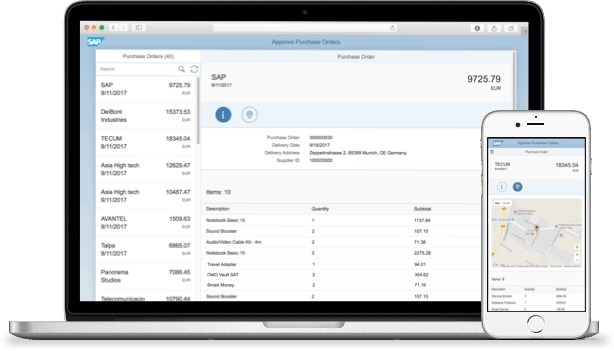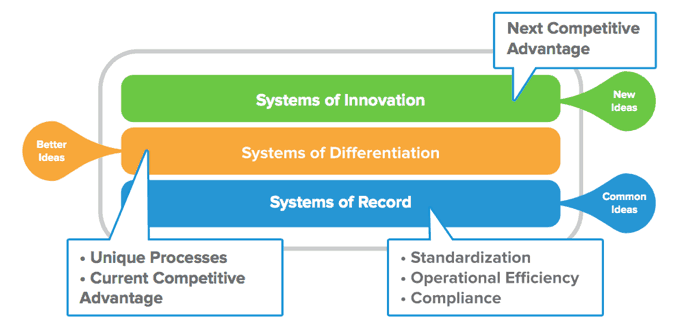An exciting announcement was made yesterday at SAP TechEd in Las Vegas. During his keynote, Björn Goerke, SAP’s CTO and President of SAP Cloud Platform, unveiled a brand-new low-code offering: SAP will resell and support the Mendix platform as an SAP Solution Extension under the label SAP Cloud Platform Rapid Application Development (RAD) by Mendix.

This means SAP is extending its existing portfolio of software development tools and technologies with a best-of-breed, enterprise-grade platform for low-code development. For customers, the new offering accelerates the delivery of applications, and expands the developer reach of SAP Cloud Platform with a model-driven approach that eliminates coding and offers intuitive, visual creation of multichannel applications. Low-code development platforms help establish the level of business agility companies need to differentiate and compete in a software-driven world.
“Well, that’s great,” you may think, “but why is this relevant for me? And how does this help my business become more agile?”
As new technologies and business paradigms emerge at a dizzying pace, application development must move faster to keep up with the demand for new software solutions.
Through 2021, market demand for app development will grow at least five times faster than IT’s capacity to deliver it.” – Gartner
Many organizations struggle with:
- Lack of Agility – Application development for digital initiatives requires rapid experimentation, frequent iteration and close collaboration between business and IT. Traditional development approaches don’t facilitate the required speed and agility, not to mention active involvement from the business.
- Technical Complexity – Teams often struggle to master the complexity of app development, applying a modern (micro-services) architecture and leveraging emerging technologies.
- Skills Shortage – Digital initiatives require scarce, hard-to-find skills spanning IoT technology, integration, data management, analytics, and app development. According to Gartner, 49 percent of CIOs expect to experience IT skills shortages in the next 12 months.
To enable innovation and digital transformation, while also managing the existing business, IT organizations are increasingly implementing a bimodal approach. Bimodal IT is the practice of managing two separate but coherent styles of work:
- Mode 1 – Optimized for areas that are well-understood. Mode 1 focuses on exploiting what is known with emphasis on efficiency. This includes renovating the legacy environment to become the digital core, so it is fit for the new world.
- Mode 2 – Optimized for areas of uncertainty. Mode 2 often works on initiatives that begin with a hypothesis that is tested and adapted during a process. Optimizing for efficiency can’t happen if there is too much unknown; hence, a different approach is needed.

Both modes are essential, creating substantial value and enabling digital transformation. Moreover, marrying Mode 1’s focus on predictable evolution of Systems of Record with Mode 2’s rapid experimentation with Systems of Innovation and Differentiation, increases overall business agility.

A rapid application development, or low-code, platform ideally supports a Mode 2-style of working as it spares you the bulk of manual coding through visual tools, intuitive templates, and pre-configured components that reduce your time to deliver. Low-code platforms not only support dealing with uncertainties of digital initiatives through rapid, iterative cycles, but also eliminate the inefficiencies of traditional development and operations activities by automating the application lifecycle management.
“OK, got that, but how is SAP’s new offering going to help me?”
The odds are that a significant portion of your enterprise applications come from SAP. Whether it’s the ERP flagship product, or line-of-business solutions for Procurement, eCommerce or, HR, these systems form the digital core. SAP Cloud Platform RAD by Mendix helps you leverage your investments and extend the power of SAP to the whole business. Business units driving digital initiatives with the need for speed can now build apps at a lightning pace, without IT losing control on critical aspects like quality, security, and scalability.
SAP Cloud Platform Rapid Application Development by Mendix offers a fast and easy way to create and continuously improve business apps at scale.
- It’s fast because it supports visual development, supplemented with a rich app store with hundreds of building blocks to compose apps. A benchmark study showed that development is up to 10 times faster with 70 percent fewer resources compared to traditional development in Java or .NET.
- It’s easy because visual development allows non-technical developers to build sophisticated business applications that meet enterprise needs. Developers can focus 100 percent on functionality versus spending time managing underlying technology. So, the pool of resources to build apps is extended beyond already-scarce professional developers.

The essence of a low-code platform is that it abstracts away from the technical complexity associated with traditional software development, enabling a broader range of users to rapidly build applications. Here’s how it works:
- Visual Development – Helps close the talent gap by enabling both professional and citizen developers to build apps without needing to code. They can visually model their data models, UIs and logic, leveraging a marketplace of building blocks to kick-start development.
- Connectors – Minimizes technical complexity by offering out-of-the-box connectors to SAP and third-party applications, as well as SAP Leonardo services in their applications, simply by dragging and dropping connector services in visual application models.
- Business-IT Collaboration – Facilitates rapid experimentation and iteration by enabling developers and business stakeholders to collaborate across the complete application lifecycle, from ideation and requirements gathering to team development and feedback management.
- Scalability and High Availability – Enables your team to start small with experimentation and scale easily, without needing to rework the application architecture. Leveraging underlying technologies like Cloud Foundry, Docker, and Kubernetes, the platform offers built-in application resilience and high availability.
- 1-Click Cloud Deployment – The 1-click deployment function allows for seamless provisioning of apps on SAP Cloud Platform, including staging to test, acceptance and production environments.
- Central App Management – All applications can be managed from a single dashboard in SAP Cloud Platform, ensuring availability, security, performance and scalability.
“Sounds good,” you may think, “What type of applications can I build with SAP Cloud Platform RAD?”
Across the board, we see customers building apps for four main use cases:
- Innovation – Generating new revenue streams for new (digital) products/services that often leverage new technologies such as IoT and Machine Learning. For example, a construction & infrastructure company developed an intelligent application for smart meter rollout, which helped them win new contracts from utility companies.
- Improve customer engagement with web and mobile apps supporting consistent brand experience across channels. For example, a logistics service provider built customer-branded portals for major consumer brands, allowing consumers to track deliveries and return materials, which helped them retain and win major multi-year contracts.
- Improve operational efficiency and workforce productivity through automating manual processes and cover ‘white space’ application needs. For example, a world leading medical device company built a Global Registration & Tracking solution for warranty management of medical devices. The app was delivered six times faster at eight percent of the cost of an alternative programming technology, saving them $1 million.
- Migrate legacy systems to the cloud, reducing cost and improving compliance. For example, a retail and commercial bank migrated over 50 Lotus Notes, MS Excel, and MS Access apps to the cloud, rationalizing the landscape of custom apps, and addressing governance and compliance issues.
With a rapid application development toolset, it’s easier than ever to deliver applications that not only help fulfill business strategy, but also satisfy diverse end users. You can build once for all devices, designing enhanced user interfaces and customer experiences that include native mobile features and full offline functionality.
Applications built with this offering can scale from limited departmental use to mission-critical customer portals serving more than a million consumers.
“This is great, and I can buy this directly from SAP?”
Indeed, and for SAP customers this solution offers a significant advantage. SAP not only offers you a single point of contact for contracting and support, but since Mendix is an SAP Solution Extension partner, our product is rigorously tested, and built into SAP’s long-term roadmap, so you can expect lasting ROI.
R&D teams on both sides are committed to delivering a great experience for developers and end users, offering deep and rich integration with SAP’s products and Cloud Platform services.
The fact that SAP is putting its weight behind low-code marks a new phase for this rapidly growing category of application platforms. We’ve seen tremendous interest already from customers that we worked with prior to the public announcement.
If you want to learn more about the partnership, please contact us. We’re looking forward to the conversation.

